Cookie Packaging
- Ushba Adil
- Oct 25, 2024
- 23 min read
Introduction to Cookie Packaging in the UK
The cookie packaging industry in the United Kingdom is an essential component of the bakery and food retail sectors. As the market for homemade cookies continues to grow, so does the demand for attractive, functional, and sustainable packaging solutions. For both small-scale bakers and established brands, cookie packaging not only protects the product but also serves as a key marketing tool, often influencing consumer decisions through design, material quality, and ease of use. The UK market has seen a significant shift toward sustainable and recyclable packaging materials, driven by both environmental concerns and consumer demand. This part provides a comprehensive overview of cookie packaging, covering its significance, materials, and regulatory considerations for those interested in selling or gifting homemade cookies.

Why Cookie Packaging Matters
Cookie packaging goes beyond just containing the product. Its functions are multifaceted:
Protection: Proper packaging protects cookies from contamination, moisture, and breakage. Given the fragility of many cookie types, especially homemade variants, packaging must prevent physical damage while maintaining freshness.
Marketing and Branding: Packaging is the first interaction a customer has with a product, making it a powerful marketing tool. An attractive package can help small bakeries compete against larger brands by making a memorable first impression.
Convenience: Thoughtfully designed packaging offers consumers an easy and enjoyable unboxing experience and provides ease of storage. Functional aspects like resealable packaging or window cutouts enhance user experience.
Sustainability: With increasing environmental consciousness, customers seek packaging that is recyclable, reusable, or biodegradable. Sustainable packaging not only benefits the planet but also enhances brand image.
Types of Packaging Materials for Cookies in the UK
The choice of material plays a pivotal role in packaging design, as it affects durability, sustainability, and cost. Here’s an overview of popular materials in the UK cookie packaging market:
Paper-Based Packaging: Often the most sustainable choice, paper-based packaging is fully recyclable and can be customized to suit various brand aesthetics. Common types include kraft paper, cardboard boxes, and paper bags.
Plastic Packaging: While less eco-friendly, plastic remains widely used for cookie packaging due to its durability, moisture resistance, and transparency. Types of plastic packaging include PET (polyethylene terephthalate) and LDPE (low-density polyethylene), both of which can be recyclable if processed correctly.
Metal Foil Packaging: Used to extend the shelf-life of cookies, foil packaging provides a barrier against moisture, light, and air, making it ideal for cookies with delicate flavors or textures. However, foil is often combined with plastic, complicating recyclability.
Glass Jars: Popular among artisanal bakers, glass jars offer a premium look and are reusable. However, they can be heavy and breakable, posing logistical challenges and increased costs for transportation.
Biodegradable and Compostable Packaging: These eco-friendly options, often derived from plant-based materials, are gaining popularity. Examples include packaging made from cornstarch, bamboo pulp, or other compostable polymers that naturally degrade without leaving harmful residues.
Regulations and Compliance for Cookie Packaging
In the UK, food packaging must adhere to strict regulations to ensure safety and quality. Here are some critical considerations:
Food Safety Standards: All packaging must comply with food safety standards, ensuring that materials used do not leach chemicals into the food. In the UK, the Food Standards Agency (FSA) enforces packaging regulations that require materials to be ‘food-safe,’ particularly when packaging directly contacts cookies.
Labeling Requirements: Cookie packaging in the UK must include essential information, such as ingredients, allergens, nutritional content, and best-before dates. This transparency is critical for consumer safety, particularly for those with dietary restrictions.
Environmental Regulations: There is an increasing focus on reducing packaging waste. UK businesses are encouraged to minimize plastic use, implement recycling initiatives, and, where possible, shift to biodegradable materials. New policies, such as the Plastic Packaging Tax, incentivize companies to adopt sustainable practices.
Design Trends in UK Cookie Packaging
Innovative packaging designs in the UK often reflect trends in the broader food and retail industry. Here are some popular design trends that resonate with UK consumers:
Minimalism and Clean Aesthetics: Minimalist designs with clean lines, simple fonts, and neutral colors appeal to the modern consumer. Such designs are often associated with high quality and elegance, appealing particularly to the adult market.
Vintage and Rustic Looks: Many UK brands, particularly small artisanal bakers, opt for vintage or rustic packaging designs, using brown kraft paper, twine, and natural tones. This trend aligns with the “homemade” and “authentic” brand image, resonating with consumers who value traditional and handmade products.
Transparency and Window Packaging: Clear windows or entirely transparent packaging allows consumers to see the product, which can be particularly appealing for decorative or gourmet cookies.
Customizable and Personalizable Packaging: Personalized packaging, especially for gifting, adds value by enabling consumers to add names, messages, or images. This trend is popular for holiday seasons and special occasions, catering to the gifting market.
Eco-Friendly Messaging: Packaging that visually communicates its eco-friendliness—using symbols like the recycling logo or words like ‘biodegradable’—appeals to environmentally conscious consumers. Many brands in the UK now incorporate green elements or nature-themed designs to reflect their commitment to sustainability.
Next Steps in Cookie Packaging
Cookie packaging in the UK market is a dynamic field with evolving trends and new solutions emerging regularly. With consumer preferences shifting towards sustainability and personalization, businesses need to stay updated on the latest developments to remain competitive. The subsequent sections will delve into specific packaging processes, customization options, and sustainability practices, providing practical guidance for those interested in crafting or selecting the perfect packaging for their homemade cookies.

Types of Cookie Packaging Options in the UK Market
The packaging for homemade cookies in the UK offers a diverse array of choices, from traditional boxes to innovative, eco-friendly alternatives. Each option has its distinct benefits, catering to different business needs, product aesthetics, and sustainability goals. This section will explore the various cookie packaging options available in the UK market, discussing their attributes, uses, and manufacturing processes to help bakers select the most suitable packaging type for their products.
1. Boxes and Cartons for Cookies
Boxed packaging is a classic choice for cookies, offering structural support, easy branding, and an appealing presentation. Here’s an in-depth look into the characteristics of boxes used in cookie packaging:
Materials and Construction: Cookie boxes are typically made from kraft paper, cardboard, or paperboard. Kraft paper is popular for its rustic appeal and eco-friendly qualities, while paperboard offers a smoother surface ideal for printing vibrant designs. Boxes are often pre-printed and then folded and glued into shape using specialized machinery.
Benefits: Boxes protect cookies from crushing, and their customizable surfaces allow for extensive branding. They can include inserts to separate cookies, preventing them from moving and breaking during transportation. Furthermore, boxes can be resealed, which is convenient for consumers.
Common Uses: These are commonly used by bakeries and artisanal cookie makers in the UK for gifting options or upscale products. They are also ideal for packaging assortments, enabling a luxurious, premium feel that consumers enjoy for gifting purposes.
Sustainability Considerations: Many companies are opting for 100% recyclable or biodegradable materials for boxes. Kraft paper boxes, for instance, can be composted, aligning well with the UK’s increasing push for environmentally friendly solutions.
2. Pouches and Bags
Pouches and bags are popular due to their flexibility, lightweight, and cost-effectiveness. They come in a variety of styles suited for different cookie types, from small snack packs to larger resealable bags for multi-cookie packs.
Materials and Variants: Pouches and bags can be made from paper, plastic, or a combination of both. Stand-up pouches made from plastic or foil are excellent for maintaining freshness and protecting against moisture. Paper bags, particularly those with wax or biodegradable linings, are often used for eco-friendly branding.
Production Process: Pouches are typically manufactured by sealing together multiple layers of film, often with zippers for resealability. Plastic bags may go through a lamination process, where different materials are bonded together to enhance durability and barrier properties.
Advantages: These packaging types are lightweight, affordable, and easily transportable, making them an economical option for small businesses. Resealable pouches are especially valued by consumers, allowing for repeated use without compromising freshness.
Target Market and Usage: Pouches are often used for snack-sized cookie portions, catering to consumers who seek convenience. Smaller bakeries and market vendors also favor them for their affordability and portability.
Sustainability Options: The recent surge in eco-conscious consumers has led to innovations in biodegradable, compostable, and recyclable pouches. UK companies are increasingly investing in bags made from polylactic acid (PLA) or other plant-based films that offer environmental benefits without sacrificing quality.
3. Tins and Metal Containers
Metal tins are a classic option that evokes a sense of tradition and quality, commonly used for premium or giftable cookies. They are reusable, sturdy, and offer excellent protection for delicate cookies, making them ideal for luxury packaging.
Material Composition: Metal tins are usually made from tinplate or aluminum, both of which can be recycled infinitely without degradation in quality. These tins are typically coated to prevent any metallic taste or reaction with the cookies.
Advantages: Tins are highly protective, making them ideal for shipping and long-term storage. Their durable, reusable nature adds value for consumers who can repurpose them as storage containers.
Uses in the UK Market: Tins are frequently used by luxury brands or for limited-edition holiday packaging. The reusable quality aligns with the gift-giving culture, making them a popular choice during Christmas and other festive seasons.
Environmental Considerations: Though metals require more resources to produce, their recyclability and reusability often make them a sustainable choice. UK brands are increasingly using recycled aluminum in their tins to reduce environmental impact.
4. Glass Jars
Glass jars are gaining traction in the artisanal cookie market, valued for their elegant presentation, durability, and eco-friendly appeal. They are an excellent choice for cookie types that may be layered or displayed attractively.
Material and Manufacturing: Glass is made from natural raw materials, primarily sand, limestone, and soda ash. It undergoes a melting and molding process before being cooled into shape. In cookie packaging, jars are typically combined with metal or cork lids to ensure freshness.
Benefits and Drawbacks: Glass jars offer a premium look, particularly appealing for customers seeking aesthetically pleasing packaging. They are also reusable, recyclable, and excellent for displaying the cookies’ colors and textures. However, glass is heavy and breakable, which can increase shipping costs and risk.
Market Trends and Usage: UK consumers associate glass jars with high-quality, sustainable products, making them popular for small-batch, handcrafted cookies. Many UK artisanal bakers use them for their “homemade” and “sustainable” appeal.
Environmental Aspects: Glass is 100% recyclable and can be recycled indefinitely without loss of purity or quality. UK businesses focused on sustainable packaging are drawn to glass jars for their minimal environmental impact and reusability.
5. Sustainable and Biodegradable Packaging
Sustainability is no longer just a trend but a requirement for many UK consumers. Eco-friendly packaging solutions have taken center stage, with numerous innovations geared towards reducing waste and environmental impact.
Materials Used: Sustainable packaging can be made from compostable films, cornstarch, bamboo pulp, and other biodegradable materials. Some companies are using cellulose or bio-based plastics that break down naturally in compost settings.
Manufacturing Processes: Biodegradable materials often require specialized production processes to ensure they meet food safety standards. These can involve extruding plant-based materials into film or using paper with vegetable-based inks for printing.
Benefits: Sustainable packaging appeals directly to eco-conscious consumers and can enhance brand reputation. For small businesses, it also offers a unique selling point, helping them stand out in the competitive UK cookie market.
Usage and Market Demand: The demand for sustainable packaging has skyrocketed in the UK, with customers increasingly favoring brands that prioritize environmental responsibility. Eco-friendly packaging is now a preferred choice for brands positioning themselves as ethical and conscious.
Drawbacks: While beneficial for the environment, sustainable materials can be costlier and may not offer the same level of protection as traditional materials. Balancing sustainability with functionality is key for brands wanting to appeal to a broader audience.
Choosing the right packaging option is a strategic decision, especially in a market as competitive as the UK’s. From the rustic charm of kraft paper boxes to the elegance of glass jars, each packaging type conveys different brand values and appeals to different consumer preferences.

Customization and Personalization Options for Cookie Packaging
In the competitive UK cookie market, customization and personalization have become essential strategies for brands and small businesses aiming to stand out. Unique and personalized packaging options can help a brand create a memorable experience for customers, increase product appeal, and even encourage social sharing. This part will delve into the various customization and personalization techniques available for cookie packaging, from visual design to functional adjustments.
The Importance of Customization in Cookie Packaging
Personalization in packaging extends beyond aesthetic appeal, directly impacting brand loyalty and perceived value. Customizable packaging allows businesses to craft a unique brand identity, resonating with specific consumer preferences and creating an emotional connection.
Brand Recognition: Customized packaging acts as a visual identifier, distinguishing a brand in a crowded market. Consumers often remember unique designs, colors, and branding elements, making it easier for them to recall a product.
Enhanced Consumer Experience: Personalization adds value for customers, offering a sense of exclusivity. This experience is particularly effective for homemade or artisanal cookie brands where a handcrafted look reflects authenticity and care.
Versatility for Different Occasions: Many businesses in the UK customize packaging according to the season or specific events. Custom seasonal packaging can appeal to consumers around holidays, such as Christmas, Valentine’s Day, and Easter, when gift-giving is prominent.
Types of Customizable Cookie Packaging Options
Customizing cookie packaging involves various methods, each catering to different aspects of brand identity and consumer experience. Below are several popular customization options for cookie packaging in the UK market.
1. Custom Printed Boxes
Printing logos, graphics, and specific branding elements on packaging is one of the most common forms of customization. Custom printed boxes can range from simple one-color designs to complex multi-colored or embossed graphics.
Screen Printing: Often used for larger batch orders, screen printing allows for vivid colors and detailed designs. This process is ideal for brands with intricate logos or graphics.
Digital Printing: Digital printing is a cost-effective solution for smaller batches, enabling full-color designs without the need for plates. This flexibility makes it ideal for seasonal or limited-edition runs.
Embossing and Foil Stamping: To enhance brand aesthetics, embossing and foil stamping add a tactile element to the packaging. Embossed logos or metallic foils can create a luxurious, high-end look that appeals to premium markets.
Popular Uses: Custom printed boxes are commonly used by bakeries aiming for a cohesive, polished brand image. They are suitable for both everyday sales and special gift boxes.
Benefits: Printed boxes improve brand recognition and create a consistent customer experience. Using sustainable inks or water-based printing options can also align with eco-friendly brand values.
2. Personalized Stickers and Labels
Stickers and labels offer a cost-effective way to customize packaging without requiring a complete redesign. They are ideal for smaller businesses and startups looking to make an impression with limited budgets.
Custom Die-Cut Stickers: These can be printed in various shapes, including logos, text bubbles, or holiday-themed shapes. Stickers can be placed on boxes, bags, or jars, adding a unique visual touch.
Seasonal and Themed Labels: Many UK brands release limited-edition labels for holidays or specific events. For example, using Halloween-themed stickers or labels around October can add a festive touch to packaging.
Uses in the UK Market: Personalized labels are popular for pop-up markets, farmer’s markets, and holiday events. Bakeries and artisanal cookie makers use them as a quick, affordable branding solution.
Advantages: Stickers and labels offer flexibility, allowing businesses to update packaging frequently without large financial investments. They also allow for personalization, as individual names or messages can be printed or written on the label, enhancing the customer experience.
3. Window Cutouts
Window cutouts allow consumers to see the product directly through the packaging, which is especially effective for decorative or unique-looking cookies. A transparent cutout can showcase the cookies’ appearance, increasing appeal and trust.
Customization Options: Windows can be cut into various shapes, such as hearts for Valentine’s Day or stars for Christmas. Additionally, using recyclable clear plastic or plant-based films allows brands to create windows without compromising sustainability.
Benefits: Windows give customers a preview of the cookies, which is especially appealing for colorful or intricate cookie designs. This also promotes transparency, allowing customers to see the product’s quality before purchase.
Application in the UK Market: Popular among artisanal bakeries and premium cookie brands, window cutouts are used for high-quality cookies that benefit from visual appeal.
4. Ribbons, Twine, and Decorative Elements
Simple decorative elements like ribbons or twine add a handmade feel, making the packaging more suitable for gifts and special occasions. Adding small decorative touches can elevate basic packaging, giving it a more premium, thoughtful appearance.
Ribbons and Bows: Often made from cotton or satin, ribbons add a touch of elegance to cookie boxes or jars. Cotton ribbons are eco-friendly and align well with sustainable brand values.
Twine and Paper Wraps: For a rustic look, brown twine or butcher’s paper wraps can enhance the “homemade” and “authentic” feel. Many UK bakeries use these simple materials to reinforce the artisanal aspect of their brand.
Uses and Advantages: Decorative elements are often added for seasonal promotions or limited editions. These additions make the packaging feel personal and thoughtful, ideal for holiday gift-giving or special orders.
5. Customizable Inserts and Dividers
Inserts and dividers help protect cookies during transit, and when customized, they enhance both functionality and aesthetics. For example, inserts can be colored or printed to match the brand’s color scheme or personalized for events like weddings or parties.
Uses: Custom inserts are often used in boxes that contain multiple cookies, particularly when each cookie has unique designs or flavors. Dividers prevent cookies from moving around, maintaining their appearance during shipping and storage.
Benefits: Inserts add structural integrity and organization, making them ideal for assortments or gift boxes. They also allow businesses to offer mixed cookie boxes without the risk of cross-contamination of flavors or designs.
Market Use: Many premium cookie brands in the UK use custom inserts for holiday assortments or special collections, ensuring that the cookies arrive in perfect condition and adding an element of luxury.
Advanced Customization Techniques for UK Cookie Brands
As consumer expectations for personalized experiences rise, several advanced customization techniques are emerging in the UK cookie packaging market:
Personalized QR Codes: QR codes on packaging can link to brand stories, recipes, or special promotions. For instance, scanning a code might lead customers to a video of the baking process or a loyalty program.
Custom Scents: Some innovative brands use scented packaging to enhance the sensory experience. Vanilla or chocolate-scented packaging creates a memorable unboxing experience, aligning with the product’s flavor profile.
Augmented Reality (AR): AR is a novelty in packaging, allowing consumers to use their smartphones to see a virtual version of the product or learn more about the brand. Though still emerging, AR offers exciting possibilities for luxury or novelty brands aiming to create a unique brand interaction.
Balancing Customization with Budget and Sustainability
While customization greatly enhances brand identity, it can also drive up costs, particularly for small businesses. Brands need to balance between offering unique, high-quality packaging and maintaining cost-effectiveness, especially if targeting a price-sensitive segment.
Bulk Printing: For small businesses, ordering in bulk can reduce unit costs significantly. Grouping seasonal packaging requirements can help maximize design utility across multiple holidays or promotions.
Eco-Friendly Choices: Sustainable packaging customization is more expensive, but it aligns with the values of eco-conscious consumers. Biodegradable stickers, recyclable inks, and compostable inserts are practical options to maintain a low environmental footprint.
Functional Aesthetics: Balancing aesthetics and functionality is key. Customization should enhance the unboxing experience without compromising the practicality of the packaging. For example, custom labels or inserts should not hinder the packaging’s resealability or sturdiness.
In today’s UK cookie market, packaging customization offers businesses a competitive edge, building brand recognition and creating memorable consumer experiences. Custom printed boxes, window cutouts, personalized labels, and unique elements like ribbons are effective ways to differentiate a brand and cater to customer preferences for unique, personal touches. As we move forward, we’ll explore the role of sustainability in cookie packaging, detailing how to make eco-friendly choices that resonate with the values of modern UK consumers.

Sustainable Practices in Cookie Packaging
In response to environmental concerns and consumer demands, sustainable packaging has become a primary focus for many brands in the UK, especially those producing homemade or artisanal cookies. From selecting eco-friendly materials to implementing green production practices, businesses are continually seeking ways to reduce their environmental footprint. This part delves into the sustainable practices available for cookie packaging in the UK, exploring different materials, manufacturing processes, and the impact on brand perception and customer loyalty.
Why Sustainability Matters in Cookie Packaging
Sustainable packaging practices aren’t merely a trend; they’re increasingly becoming a consumer expectation. Here are several reasons why UK brands, particularly in the food sector, are prioritizing eco-friendly packaging:
Environmental Impact: Traditional packaging materials, especially plastics, contribute significantly to pollution and landfill waste. Switching to biodegradable or recyclable packaging materials reduces a brand's environmental footprint.
Consumer Preferences: A large portion of UK consumers are eco-conscious, with many actively seeking brands that align with their values. Sustainable packaging enhances a brand’s appeal to this demographic, encouraging repeat purchases and loyalty.
Regulatory Requirements: The UK government has introduced various initiatives, such as the Plastic Packaging Tax, which imposes levies on businesses using non-recyclable plastic. Compliance with these regulations not only avoids financial penalties but also reinforces a brand's commitment to sustainable practices.
Brand Reputation: For small businesses and artisanal bakers, using eco-friendly packaging can be a major selling point, differentiating them in a competitive market. Sustainable packaging communicates responsibility and care, attributes that resonate well with consumers in the UK.
Eco-Friendly Materials for Cookie Packaging
Selecting sustainable materials is the first step toward creating eco-friendly packaging. The UK cookie packaging market offers a variety of environmentally friendly options, each with unique benefits and considerations.
1. Recycled and Recyclable Paper
Recycled paper is one of the most popular choices for sustainable cookie packaging. Made from repurposed paper materials, it’s both affordable and accessible, making it ideal for small bakeries and large brands alike.
Characteristics: Recycled paper packaging can vary in texture and thickness, suitable for different packaging needs such as boxes, bags, and wraps. Kraft paper, for example, has a rustic, earthy appeal that suits artisanal or homemade brands.
Benefits: Using recycled paper minimizes deforestation and reduces energy consumption in production. Recyclable paper also contributes to a circular economy by allowing consumers to recycle the packaging after use.
Uses in the UK Market: Recycled paper is used widely by brands that emphasize sustainability. Paper bags or boxes are common for cookies and can be easily customized with eco-friendly inks for branding.
2. Biodegradable Plastics and Plant-Based Films
Biodegradable plastics and films provide an alternative to traditional plastics, breaking down naturally over time without harming the environment.
Types and Composition: Biodegradable plastics can be made from natural sources like cornstarch, cellulose, or polylactic acid (PLA). These materials decompose over time, especially in compostable settings.
Advantages and Limitations: Biodegradable plastics offer the protective qualities of traditional plastic while being environmentally friendly. However, they may not break down as easily in regular landfill conditions and may require specific composting facilities.
Market Demand: As UK consumers become more aware of plastic pollution, the demand for biodegradable plastics has grown. Many UK cookie brands use these materials for cookie wrappers or resealable pouches, balancing protection with sustainability.
3. Compostable Packaging
Compostable packaging is designed to break down into natural elements, returning nutrients to the soil and leaving no toxic residue. It is one of the most sustainable options for cookie packaging.
Materials Used: Compostable packaging can be made from materials such as PLA, cornstarch, bagasse (sugarcane waste), or bamboo pulp. Each has distinct characteristics that can be selected based on the cookie's needs.
Benefits: Compostable packaging aligns with the values of eco-conscious consumers, allowing them to dispose of packaging guilt-free. Additionally, it positions a brand as progressive and environmentally responsible.
Challenges: While compostable materials are beneficial, they may cost more than traditional packaging and require clear disposal instructions for consumers unfamiliar with composting.
Popularity in the UK: Compostable cookie bags and wraps are increasingly popular in the UK, particularly among small, sustainable brands that focus on organic or handmade products.
4. Glass and Reusable Containers
Glass jars and reusable containers, while not single-use packaging, offer an eco-friendly solution that emphasizes sustainability and reusability.
Advantages: Glass jars can be reused by the consumer, reducing waste and enhancing the product’s value. They also provide excellent product visibility and a high-end aesthetic, ideal for premium or decorative cookies.
Drawbacks: Glass is heavier and breakable, making it less practical for bulk packaging or shipping over long distances.
Application in the Market: Glass jars are widely used by high-end cookie brands or those selling small batches. They are particularly popular for gift packs or limited-edition items, where packaging reusability adds a layer of premium appeal.
Sustainable Manufacturing Practices for Cookie Packaging
Beyond materials, the processes used to manufacture packaging play a crucial role in determining its environmental impact. Here are some key sustainable manufacturing practices adopted by UK packaging suppliers:
1. Energy-Efficient Production
Manufacturers are increasingly focusing on energy-efficient processes to reduce carbon emissions. This can include utilizing renewable energy sources such as wind or solar power, optimizing machinery for reduced energy consumption, and implementing waste-reduction systems.
Benefits: Energy-efficient production reduces greenhouse gas emissions and can decrease production costs over time. Many consumers value products manufactured with a low environmental impact, adding appeal to sustainably produced cookie packaging.
Adoption in the UK: Many UK packaging manufacturers have made strides in energy-efficient production. For example, some factories are now certified as carbon-neutral, which can be an attractive selling point for brands committed to sustainability.
2. Water-Based Inks and Non-Toxic Printing
Traditional inks often contain volatile organic compounds (VOCs) that are harmful to both human health and the environment. Using water-based or vegetable-based inks is a safer, eco-friendly alternative.
Characteristics: Water-based inks produce vibrant colors and adhere well to paper and cardboard, making them suitable for branded cookie packaging. They are non-toxic and do not emit harmful chemicals.
Benefits: These inks align with eco-conscious branding efforts and offer a more sustainable alternative to petroleum-based inks.
Market Use: Many artisanal and eco-friendly cookie brands in the UK use water-based inks for printing labels, logos, and designs on their packaging, ensuring that even the smallest details align with their sustainability goals.
3. Minimalist Packaging
Minimalist packaging reduces the amount of material used without compromising protection or appeal. This practice involves using fewer resources and simplifying designs to reduce waste.
Benefits: Minimalist packaging reduces costs for both brands and consumers, as fewer materials are used. It also appeals to modern consumers who appreciate streamlined, waste-free designs.
Implementation: Minimalist packaging is popular among UK brands that emphasize simplicity and sustainability, often using a single material or eliminating unnecessary embellishments.
4. Local Sourcing and Production
Sourcing packaging materials locally reduces transportation emissions, supports the UK economy, and shortens supply chains, which can be beneficial for small businesses aiming for sustainable growth.
Benefits: Locally sourced materials reduce the carbon footprint associated with transportation and allow for faster production turnaround times.
Adoption by UK Brands: Many small and medium-sized cookie brands in the UK prioritize local suppliers to minimize their environmental impact. Additionally, local production supports the “made in the UK” branding, which resonates with consumers.
Sustainable Packaging Strategies for UK Cookie Brands
Sustainability strategies involve more than just choosing the right materials or processes. For UK cookie brands, creating a sustainable packaging approach can involve additional steps to engage consumers and maximize environmental impact.
Clear Disposal Instructions: Packaging that is compostable, biodegradable, or recyclable needs clear labeling and disposal instructions to ensure it is correctly disposed of. Many UK brands add recycling icons or written instructions to inform consumers.
Take-Back Programs: Take-back or return schemes encourage consumers to return packaging to the brand for recycling or reuse. Some companies offer discounts on future purchases as an incentive, boosting customer loyalty while supporting a circular economy.
Eco-Friendly Partnerships: Many brands partner with organizations or suppliers that align with their values. This could involve collaborating with sustainable packaging suppliers or certification programs, such as the Forest Stewardship Council (FSC) for responsibly sourced paper.
Consumer Education: Informing consumers about the benefits of sustainable packaging and encouraging eco-friendly disposal practices can increase a brand’s positive impact. This can be done through social media, packaging inserts, or website content.
The commitment to sustainable cookie packaging involves a multi-faceted approach, from selecting eco-friendly materials to adopting greener manufacturing practices. By aligning with eco-conscious consumer preferences and following sustainable guidelines, UK brands can establish a positive brand image, reduce environmental impact, and meet the growing demand for responsible packaging. As we move into the final part of this article, we’ll explore how “Pearls & Crumbs” leverages these practices to create premium, sustainable, and beautifully packaged homemade cookies in London.

Case Study – Pearls & Crumbs: Bespoke Cookie Packaging and Sustainable Practices in London
In the UK’s crowded market for artisanal and homemade cookies, Pearls & Crumbs stands out as a brand known for its luxurious, custom-designed cookies and cakes. Nestled in West London, Pearls & Crumbs specializes in handmade desserts and packaging that’s as unique as the treats inside. This final section will explore how Pearls & Crumbs leverages innovative and sustainable packaging techniques to deliver high-quality, bespoke products while prioritizing environmental responsibility.
About Pearls & Crumbs
Pearls & Crumbs has built a strong reputation as a premium cake and cookie boutique in West London, catering to weddings, celebrations, and custom orders. Known for their attention to detail and artistry, they create not just desserts but memorable experiences. Their approach to packaging reflects this dedication, as they blend aesthetics with practicality and sustainability to enhance the overall customer experience.
Packaging Philosophy at Pearls & Crumbs
The packaging philosophy at Pearls & Crumbs centers around three main principles:
Quality and Craftsmanship: Every element of the packaging is meticulously crafted to reflect the brand’s premium positioning. By focusing on quality materials and elegant designs, Pearls & Crumbs ensures that each packaged product is a luxurious experience.
Customization and Personalization: Custom packaging at Pearls & Crumbs is tailored to the unique needs of each client, from weddings and baby showers to corporate events. By working closely with clients, they incorporate brand colors, themes, or personal touches, offering packaging that’s distinct and memorable.
Sustainability and Eco-Friendliness: Recognizing the importance of reducing environmental impact, Pearls & Crumbs has committed to using eco-friendly materials and adopting sustainable practices. From biodegradable packaging to recyclable labels, they incorporate sustainability in every aspect of their packaging strategy.
Packaging Options at Pearls & Crumbs
Pearls & Crumbs offers a range of packaging options tailored to different occasions, balancing visual appeal with functional considerations. Here are some of their signature packaging choices:
Customizable Gift Boxes: For premium cookie assortments, Pearls & Crumbs uses high-quality, recyclable cardboard boxes with customized designs. These boxes often feature the brand’s signature style, incorporating soft pastels and elegant typography that appeals to their clientele.
Window Cutouts: Some boxes include transparent cutouts, allowing customers to view the cookies. This feature is particularly appealing for events like weddings, where intricate cookie designs are showcased.
Glass Jars for Artisanal Appeal: Glass jars are used for small-batch cookies, offering an upscale, reusable packaging option. These jars are often sealed with sustainable cork lids, combining functionality with an elegant presentation.
Reusability: The jars are marketed as reusable, encouraging customers to repurpose them after enjoying their cookies. This aligns well with the brand’s sustainability goals and appeals to environmentally conscious consumers.
Seasonal and Themed Packaging: For holidays and special events, Pearls & Crumbs offers limited-edition packaging with seasonal themes. For example, during Christmas, they may use festive colors and decorations like twine and tags, enhancing the gift-ready appeal.
Eco-Friendly Decor: Themed packaging uses natural materials like jute twine and compostable tags, allowing customers to recycle or compost these decorative elements after use.
Personalized Labels and Ribbons: To add a special touch, Pearls & Crumbs provides personalized labels and satin ribbons that reflect the theme of the event. This customization is particularly popular for weddings, where couples can add names, dates, or short messages.
Biodegradable Inks: All printed elements, including labels, are made with biodegradable inks, ensuring that even the smallest details adhere to their eco-friendly philosophy.
Sustainable Practices in Packaging Production
Pearls & Crumbs integrates sustainability into their packaging by focusing on material sourcing, production processes, and consumer education. Here’s a closer look at how they maintain environmental responsibility:
Use of Recycled and Recyclable Materials: Most of their packaging materials are either made from recycled sources or are fully recyclable. For example, the cardboard boxes are crafted from recycled paper, and the glass jars are recyclable, allowing customers to make eco-friendly disposal choices.
Partnerships with Sustainable Suppliers: Pearls & Crumbs collaborates with suppliers who share their commitment to the environment. Their packaging suppliers are selected based on sustainability credentials, including certifications like FSC (Forest Stewardship Council) for responsibly sourced paper.
Minimalist and Waste-Free Design: By embracing minimalist packaging, Pearls & Crumbs reduces excess materials and focuses on compact designs that minimize waste. This approach not only saves resources but also enhances the visual appeal of their products, appealing to modern consumers who value both aesthetics and sustainability.
Eco-Conscious Disposal Instructions: Each package includes information on how to recycle or compost the materials, ensuring customers know the most sustainable way to dispose of their packaging. By educating their clients, Pearls & Crumbs encourages environmentally friendly habits among their consumer base.
The Impact of Sustainable Packaging on Brand Perception
For a brand like Pearls & Crumbs, sustainable packaging is more than just an environmental initiative; it’s a critical component of their brand identity. Here are some ways in which their sustainable practices enhance their brand perception:
Customer Loyalty and Positive Brand Image: In a market where consumers increasingly favor eco-conscious brands, Pearls & Crumbs’ commitment to sustainability strengthens customer loyalty. UK consumers, particularly those in London, are highly supportive of brands that take environmental responsibility seriously.
Social Media Appeal: The visually appealing, eco-friendly packaging creates social media-friendly moments, with customers frequently sharing their unboxing experiences online. This organic social media exposure boosts brand visibility and reinforces their reputation as a luxury, eco-conscious brand.
Market Differentiation: Pearls & Crumbs distinguishes itself from competitors through its dedication to quality, aesthetics, and sustainability. This differentiation is particularly important in a saturated market, positioning them as a leading choice for customers who prioritize ethical and premium products.
Consumer Response and Benefits of Sustainable Packaging
Consumers today expect brands to not only deliver high-quality products but also to show accountability for their environmental footprint. Here’s how the sustainable practices of Pearls & Crumbs resonate with their target audience:
Enhanced Customer Experience: The thoughtful, eco-friendly touches create a memorable unboxing experience that reflects the brand’s values, enhancing customer satisfaction and perceived product value.
Alignment with Modern Values: UK consumers, especially in metropolitan areas like London, are more eco-conscious and willing to support brands that prioritize the environment. Pearls & Crumbs’ commitment to sustainable packaging aligns well with these values, making their products more appealing to their target market.
Encouragement of Sustainable Consumer Practices: By educating their customers on eco-friendly disposal and offering reusable packaging, Pearls & Crumbs promotes sustainable practices within its consumer base. This empowerment not only helps the environment but also fosters a deeper connection between the brand and its customers.
In the UK, cookie packaging plays an essential role not only in protecting and presenting the product but also in enhancing the brand experience and aligning with customer values. As illustrated by Pearls & Crumbs, a well-thought-out approach to packaging can significantly strengthen a brand's identity and reputation. From recyclable boxes and reusable glass jars to eco-friendly inks and personalized elements, their packaging practices are tailored to offer a memorable, high-quality experience while remaining sustainable and eco-friendly.
The evolution of cookie packaging in the UK reflects the growing emphasis on sustainability, aesthetics, and customer engagement. By adopting sustainable materials, customizable designs, and mindful production practices, brands like Pearls & Crumbs meet consumer expectations, create a lasting impact, and contribute positively to the environment. For UK residents interested in homemade cookies with top-quality packaging, Pearls & Crumbs provides a model of excellence, where every package is designed not just to hold a product but to tell a story of care, craftsmanship, and commitment to sustainability.

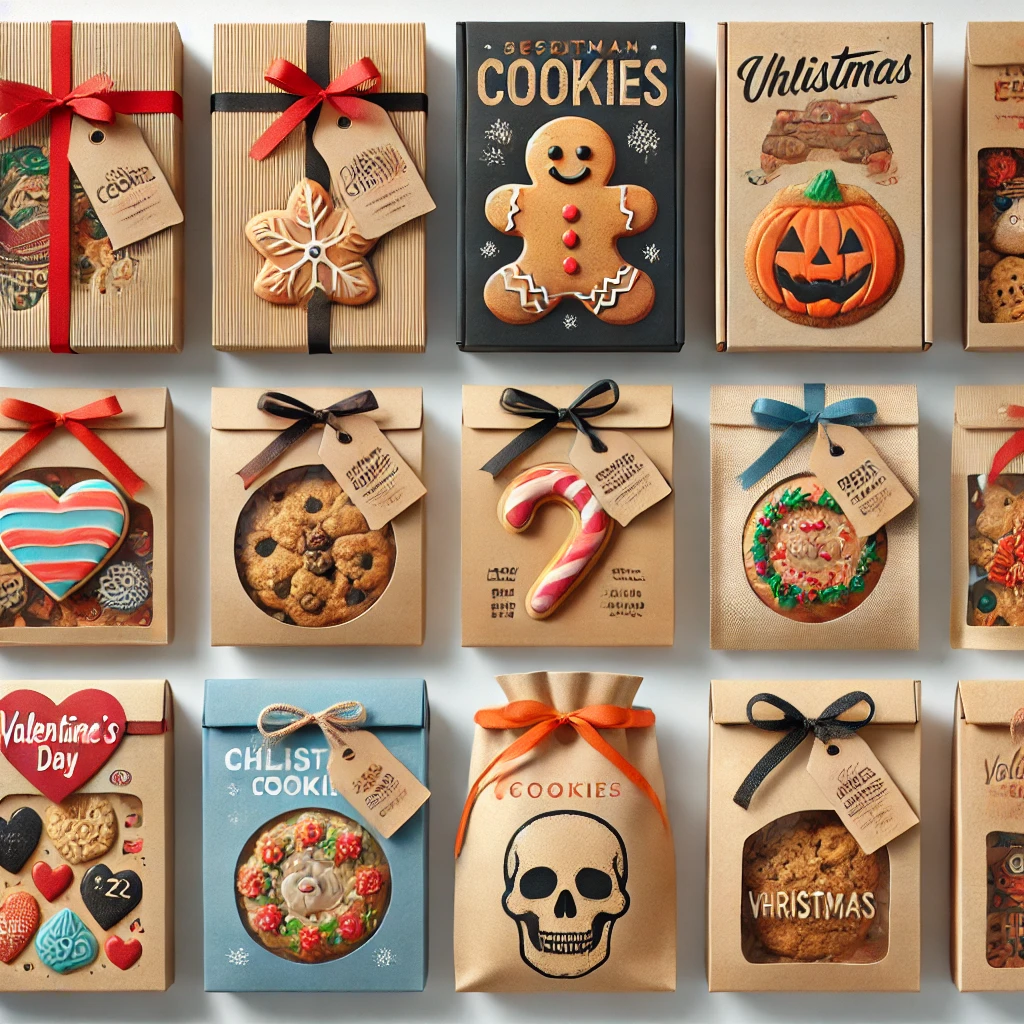

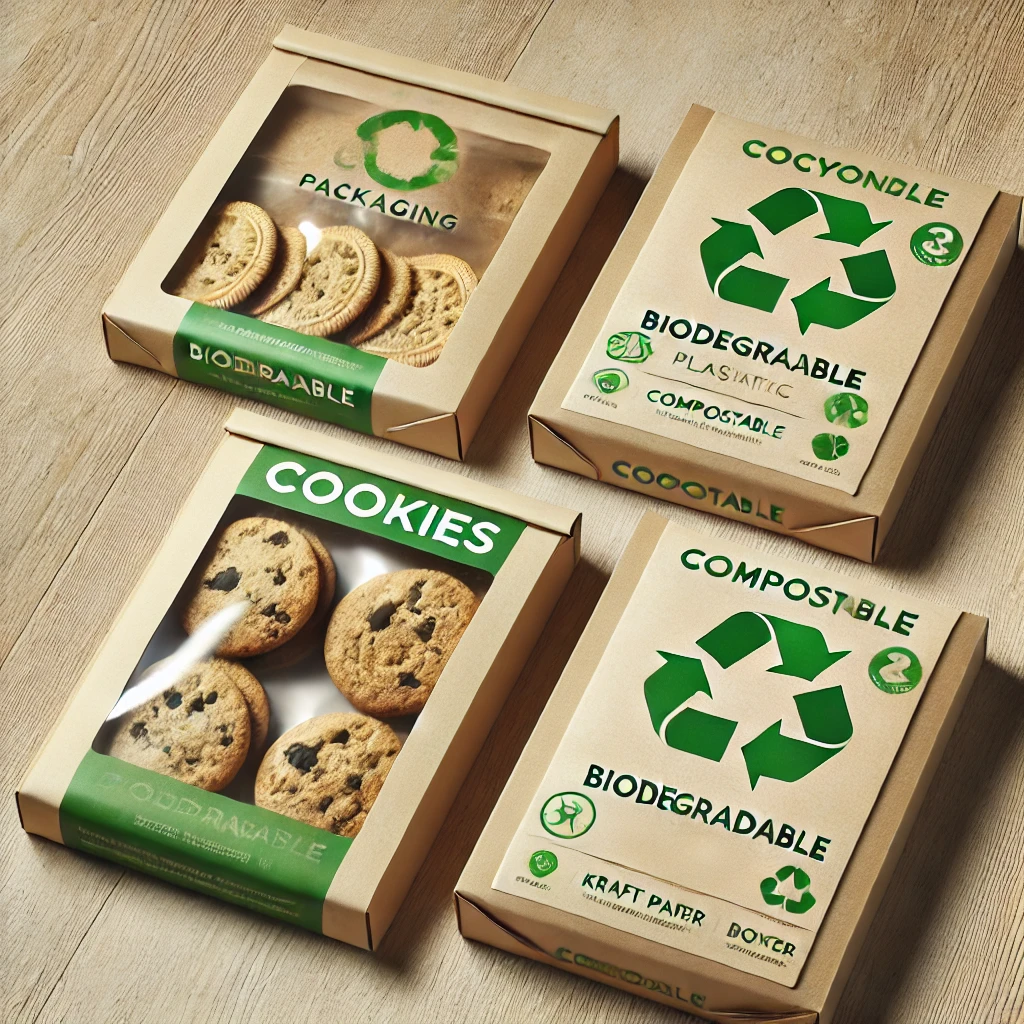
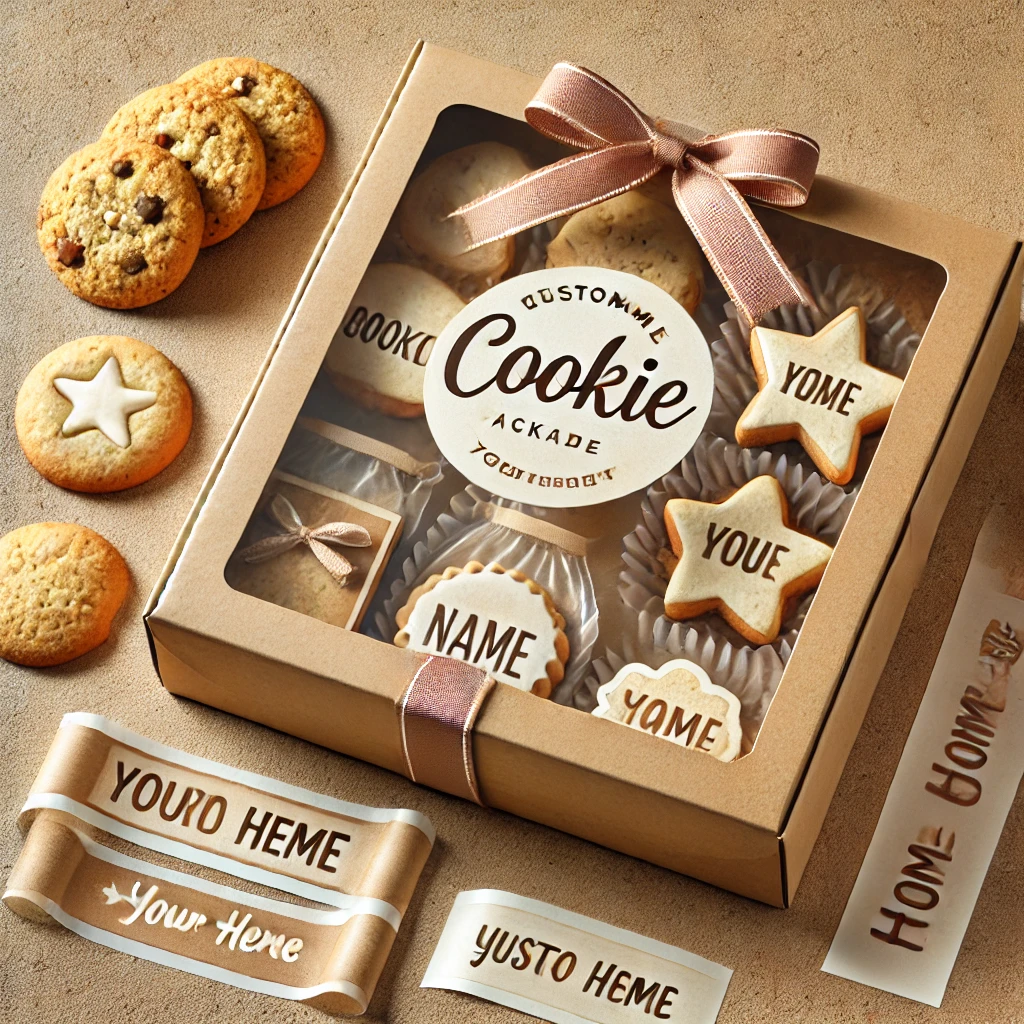
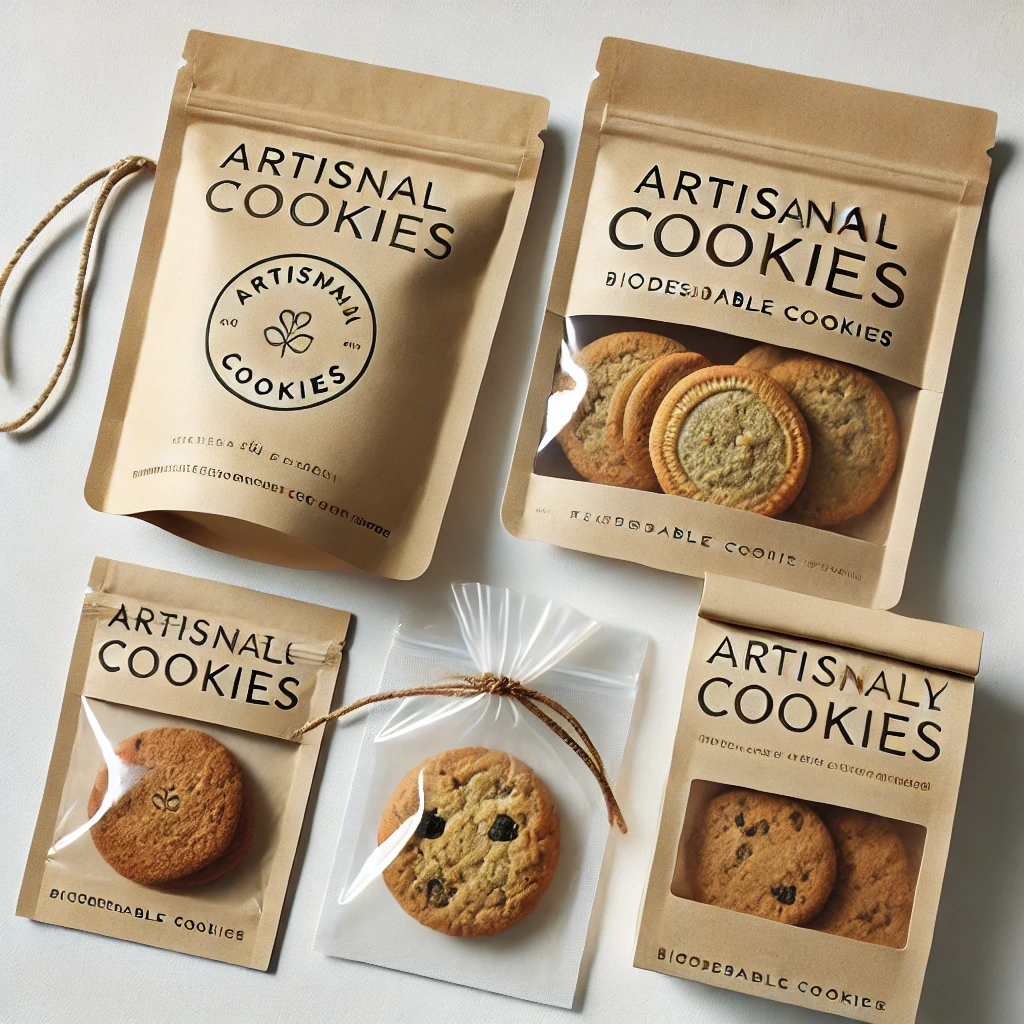
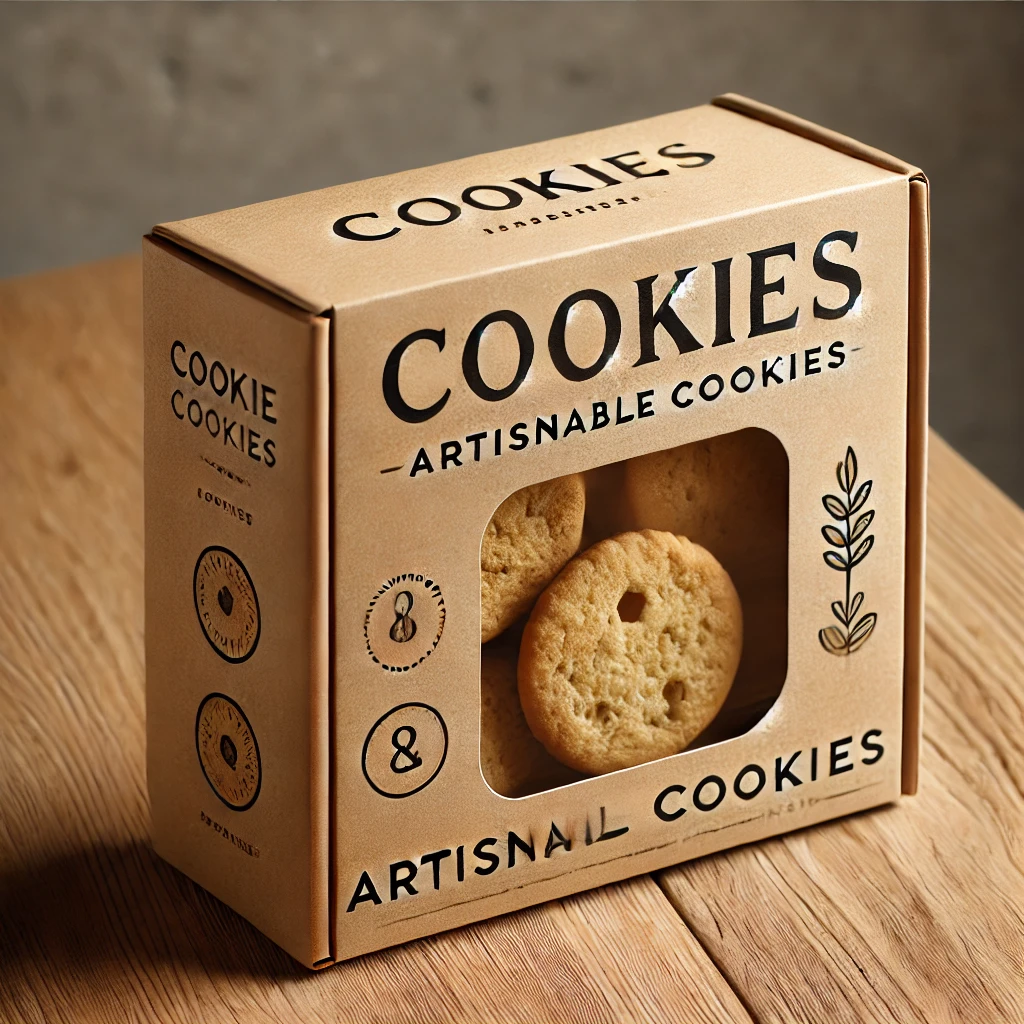
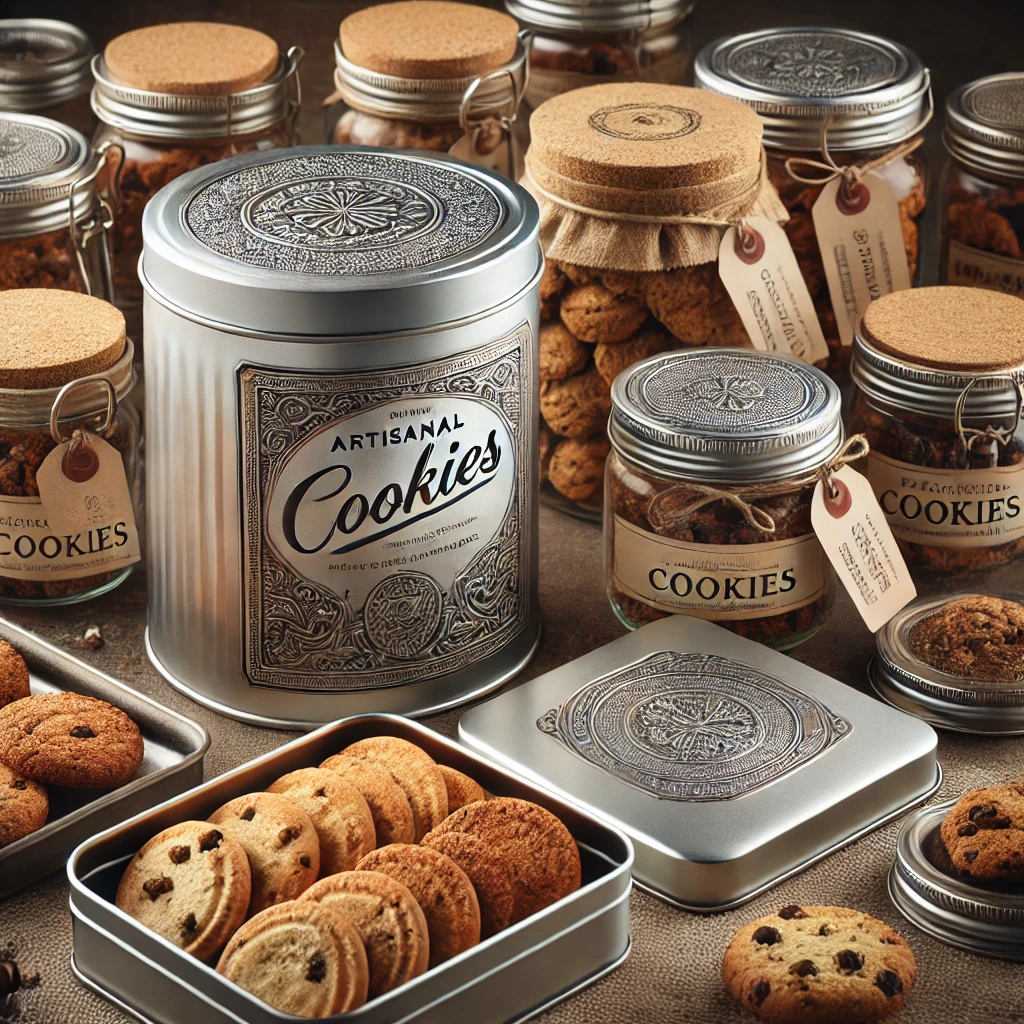
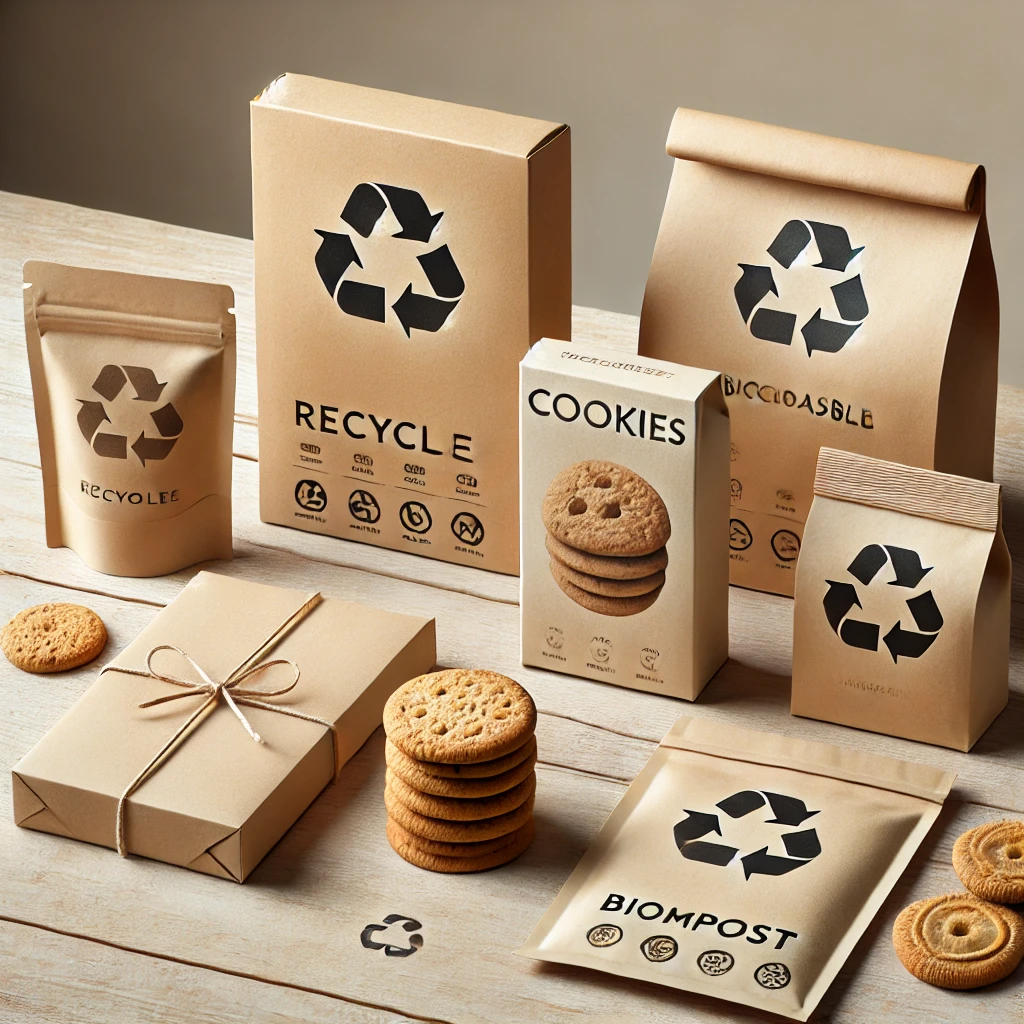
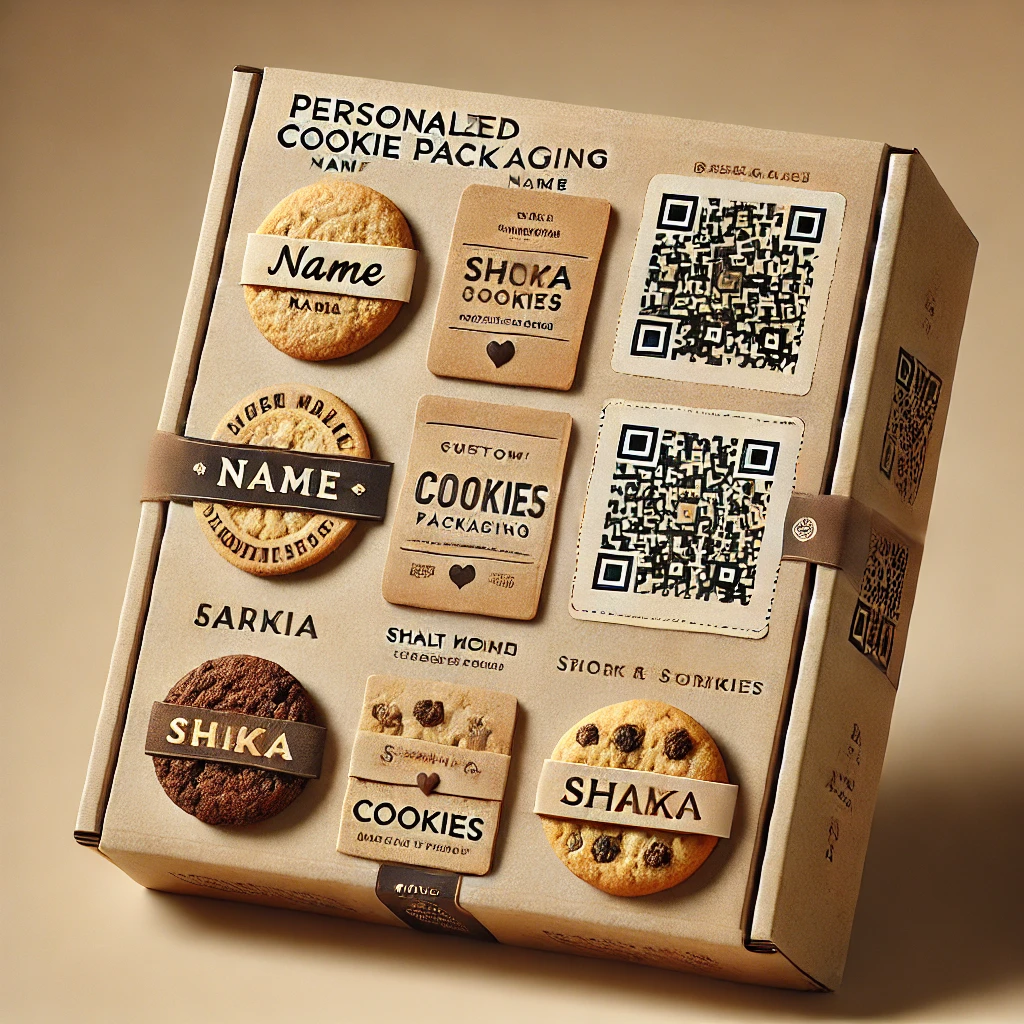
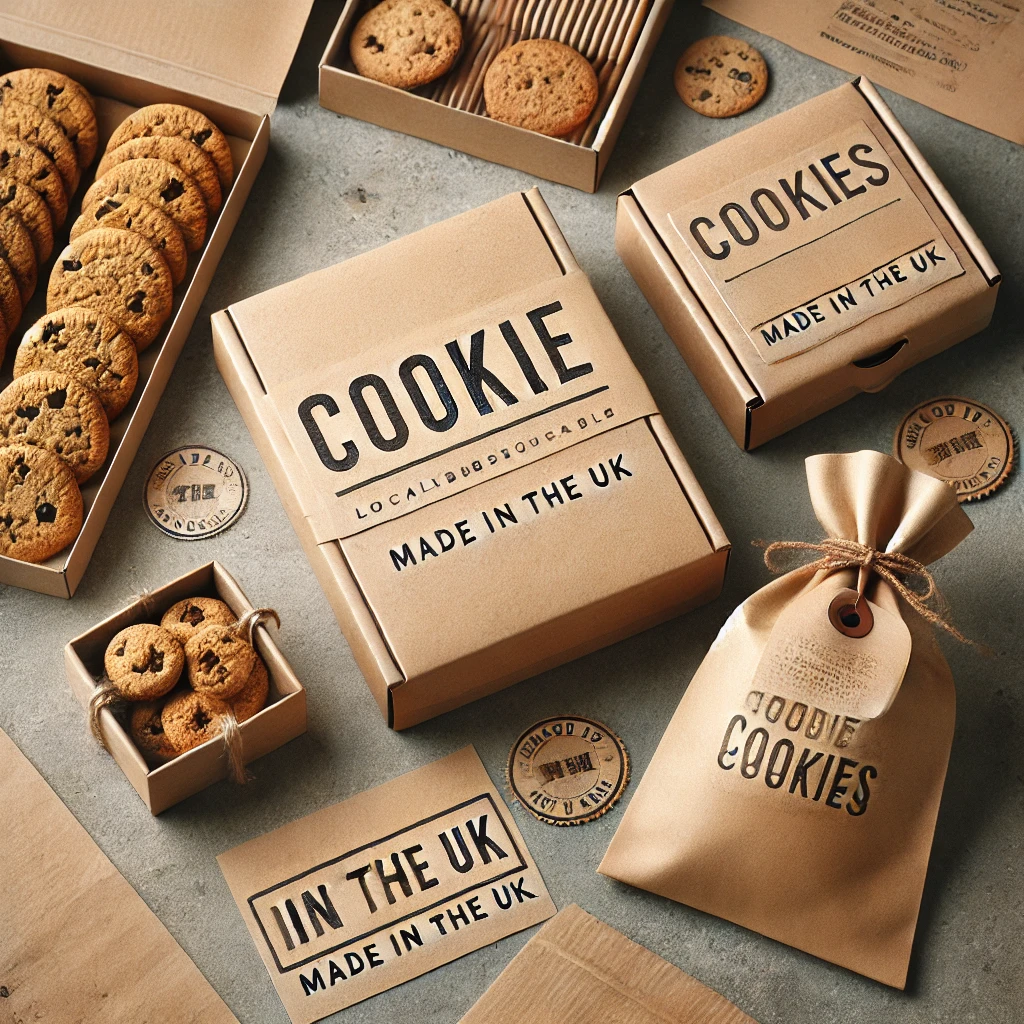


.png)
Comments